INTRODUCTION
If you're reading these lines right now you don't need me to tell you that solid state drives have turned the market upside down lately with their somewhat substantial price cuts. Sure SSDs are still nowhere close to even challenging the price/capacity ratio regular HDDs have been enjoying since pretty much forever but at least now people can get their hands on even 2TB models without having to spend their entire monthly paycheck. Of course 2TB SSDs cost roughly 3 times as much as a regular 8TB HDD so if lots of storage capacity is what you want then i see very little reason in getting such an SSD right now. On the other hand 480/512GB SSDs are very affordable and have become surprisingly popular among gamers, enthusiasts and professionals who are after fast read & write speeds and sufficient storage space. Well since right after our Micron M510DC 480GB review some of you asked today we'll be testing the M600 512GB model.
Micron Technology, Inc., is a global leader in advanced semiconductor systems. Micron’s broad portfolio of high-performance memory technologies—including DRAM, NAND and NOR Flash—is the basis for solid state drives, modules, multichip packages and other system solutions. Backed by more than 35 years of technology leadership, Micron’s memory solutions enable the world’s most innovative computing, consumer, enterprise storage, networking, mobile, embedded and automotive applications. Micron's common stock is traded on the NASDAQ under the MU symbol.
Just like the Crucial MX100 for the M600 lineup (currently available in 128GB, 256GB, 512GB and 1TB capacities) Micron has made use of their newest 128Gbit 16nm NAND flash which they've paired with the Marvell 88SS9189-BLD2 NAND flash controller. The M600 also fully supports AES 256-bit hardware encryption, TCG Opal 2.0 & IEEE-1667 (eDrive is supported) and features dynamic write Acceleration (MLC NAND behaves like SLC NAND via firmware tweaking / only available in the 128/256GB variants), 300TBW endurance, RAIN technology, partial power loss protection (data-at-rest), DevSleep (power saving), Momentum Cache (makes use of DRAM bandwidth to achieve increased burst performance) and adaptive thermal monitoring. The real question now is to see exactly how the M600 compares not only with the M510DC but also against other similarly priced models.
SPECIFICATIONS AND FEATURES

PACKAGING AND CONTENTS
Since the M600 is basically an OEM drive it gets shipped inside a white box (which naturally you can hardly see on our white photo bench).
There's a small sticker on the box that has the serial number, barcode and drive capacity on it.
The drive is safely placed inside a formed piece of hard plastic.
Along with the drive Micron has also placed a 7.5mm to 9mm adapter/bracket.
THE M600 512GB
The M600 is yet another 2.5" 7.5mm thick SSD so nothing really new here.
You can check the model, serial and part numbers along with their barcodes, the installed firmware version, drive capacity and connectivity and several certification logos from a white sticker placed at the top of the drive.
The sides and rear of the enclosure have no screws and that means it's probably pressed shut.
Typically at the rear of the drive we see the SATA data and power connectors.
As it turns out the enclosure was indeed pressed shut so opening it was easy.
One side of the PCB is completely empty in our sample (this space is taken by NAND flash modules in the 1TB model).
On the other side we see 8 NAND flash modules each 64GB in size.
A single LPDDR2 SDRAM module is placed right next to the Marvell 88SS9189-BLD2 NAND flash controller.
MICRON STORAGE EXECUTIVE


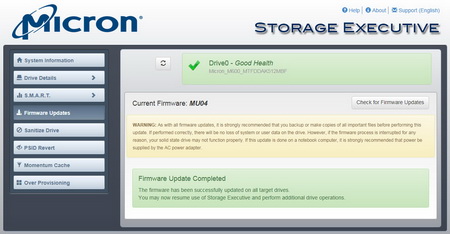
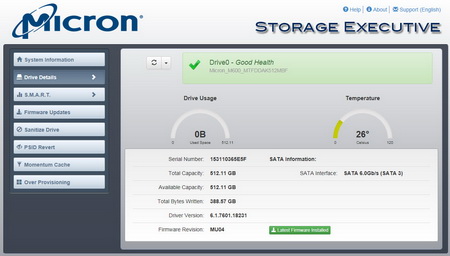

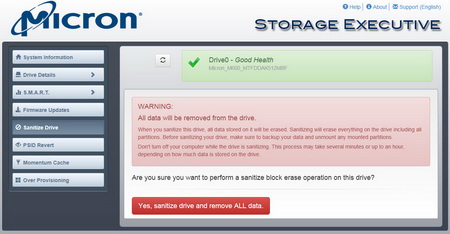

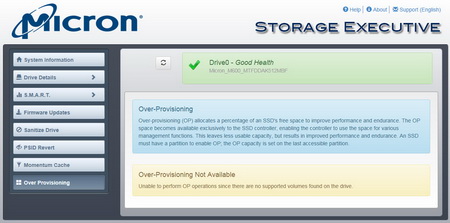
Micron has a very useful little program called the Storage Executive via which the end user can check the state of the drive, perform firmware updates, format/sanitize the drive, enable/disable drive encryption, enable/disable momentum cache and adjust the drives over-provisioning (supported models only).
Momentum Cache is very much alike RAPID by Samsung since it also uses your systems DRAM bandwidth (free available part) to boost read & write performance. So in this review we will also compare the M600 512GB with Momentum Cache enabled with several Samsung models with RAPID enabled.
TEST BED


TESTING METHODOLOGY
After roughly 8 years of testing sold state drives i have concluded that it's almost impossible for any single benchmark suite to accurately measure their performance and that's why in certain benchmark suites we see amazing read/write performance numbers with some drives while in others things are quite different. The reason behind this is that some benchmarking suites are configured to read and write random chunks of data while others read and write constant (sequential) ones. So that's why i always use a very wide selection of benchmarking suites including AIDA64, HD Tach RW, HD Tune Pro, Crystal Disk Mark, Sisoftware Sandra Pro, AS SSD, IOmeter and ATTO. To get the most accurate results each test gets repeated a total of 6 times with the average performance numbers recorded into our charts. Also as of February 25th 2015 our results will also include the Storage Networking Industry Association’s (SNIA) IOMeter tests. These tests include a 12 Hour write test used to “simulate” performance degradation over time and a mixed workload test which basically shows what you can expect when using an SSD continuously for roughly two hours. Unfortunately due to the time required for these tests we repeat them a total of 3 times and not 6 as the above.
Many people have made inquiries about our charts in the past so once again please do keep in mind that the Charts have the average performance numbers of each drive recorded and not the peak (highest) ones. Also although every single one of these programs can help potential buyers choose the right drive for their needs you should also remember that from any kind of benchmark up to real world usage the gap is not small (and usually most differences will go unnoticed by most people). All tests were performed in a fresh Windows 7 Ultimate x64 installation with every update installed up to January 28th 2016.
TEST RESULTS - AIDA64 / ATTO
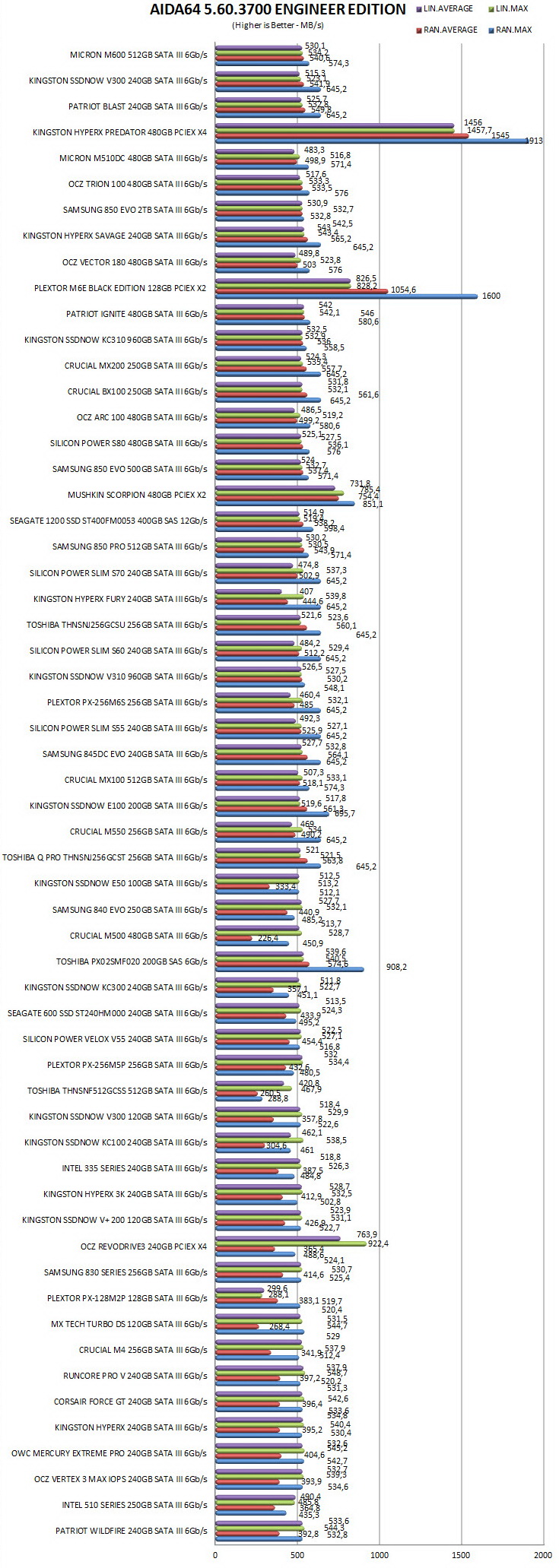
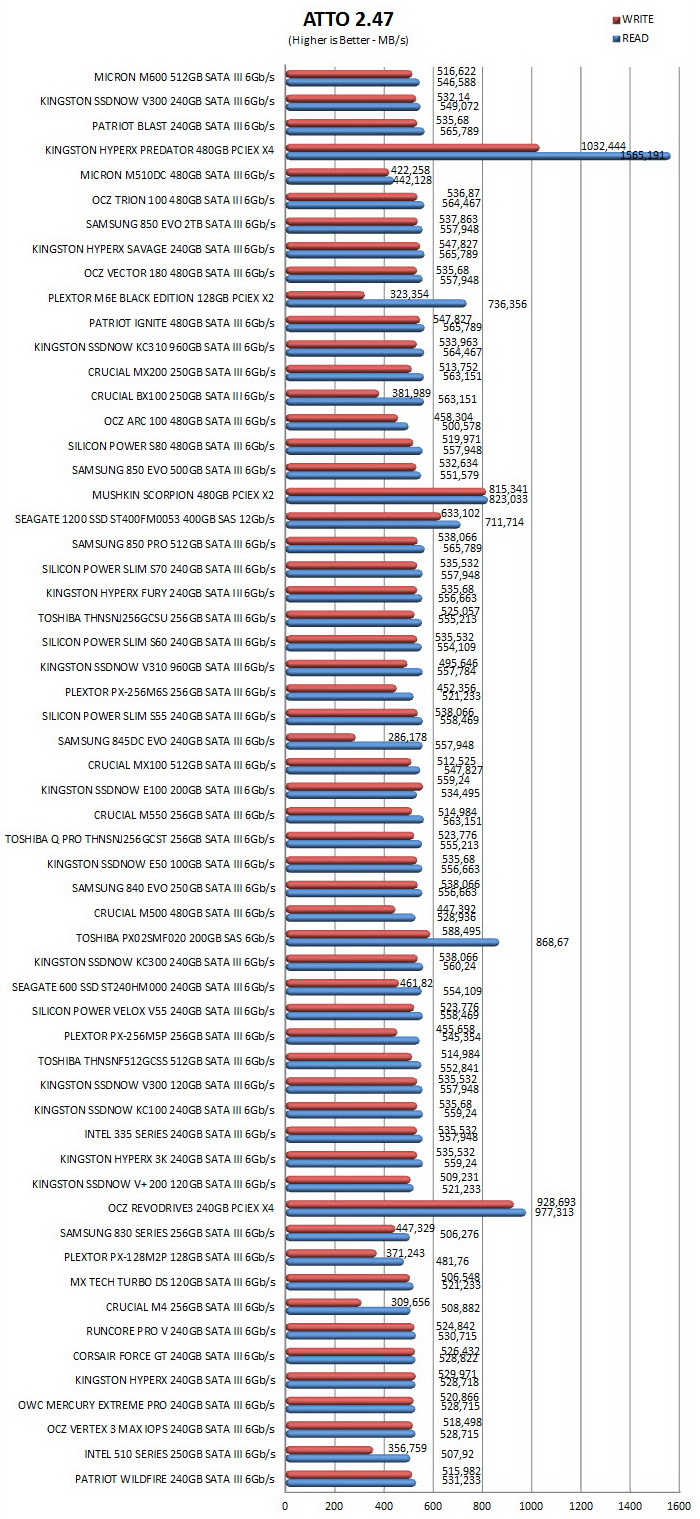
TEST RESULTS - HD TACH RW / HD TUNE PRO
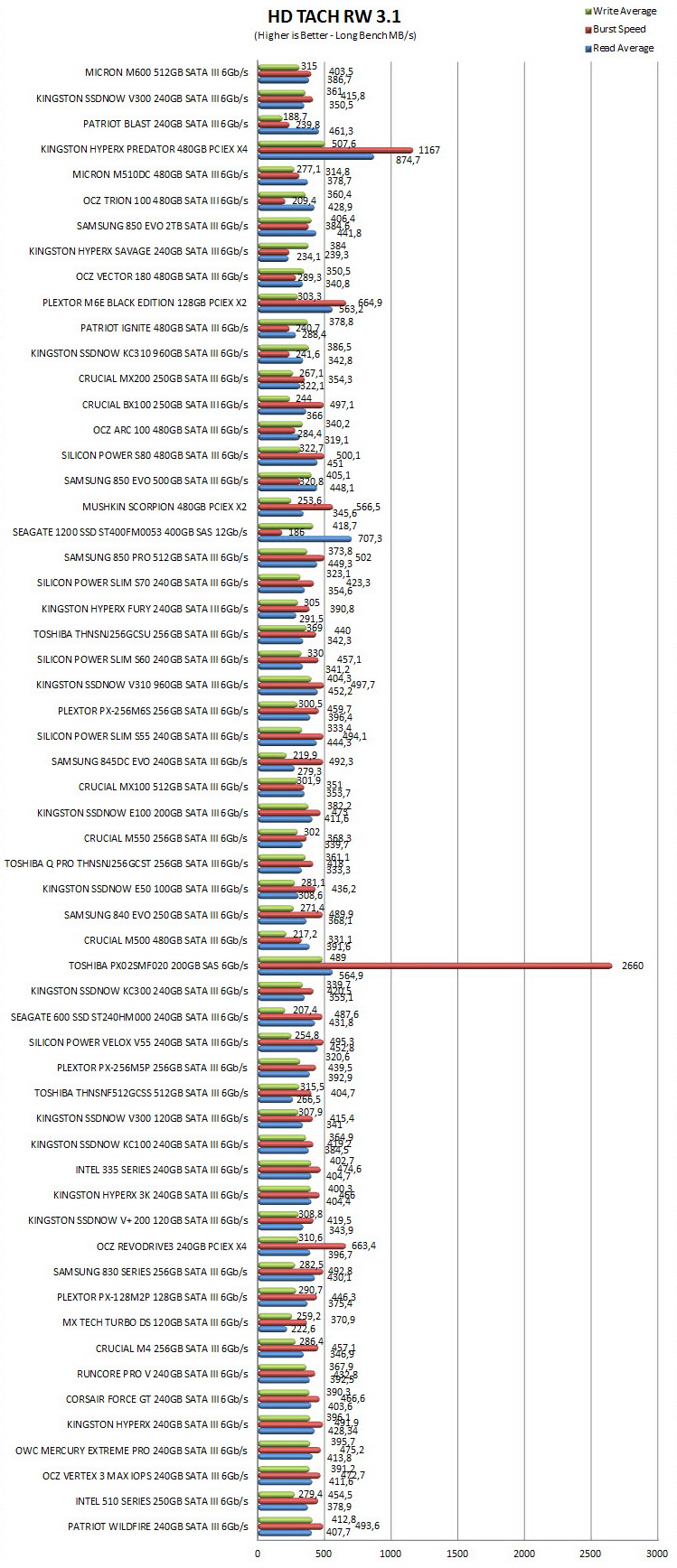
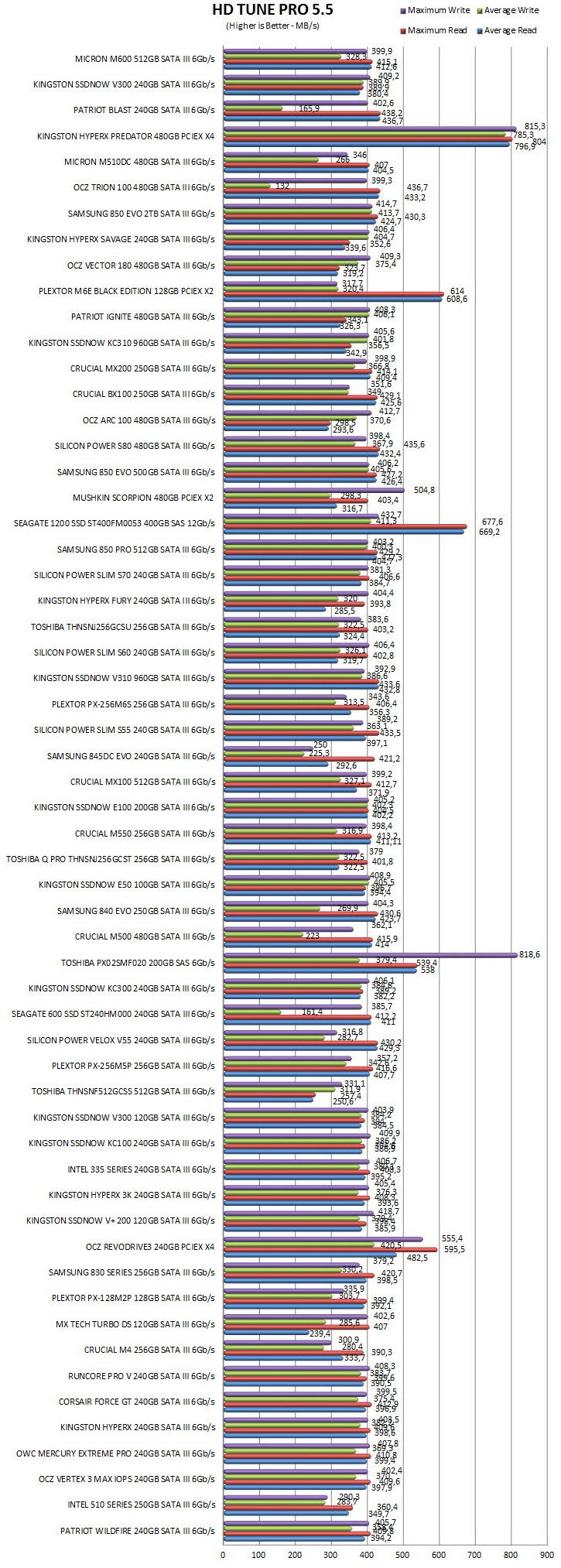
TEST RESULTS - SISOFTWARE SANDRA PRO / CRYSTAL DISK MARK X64
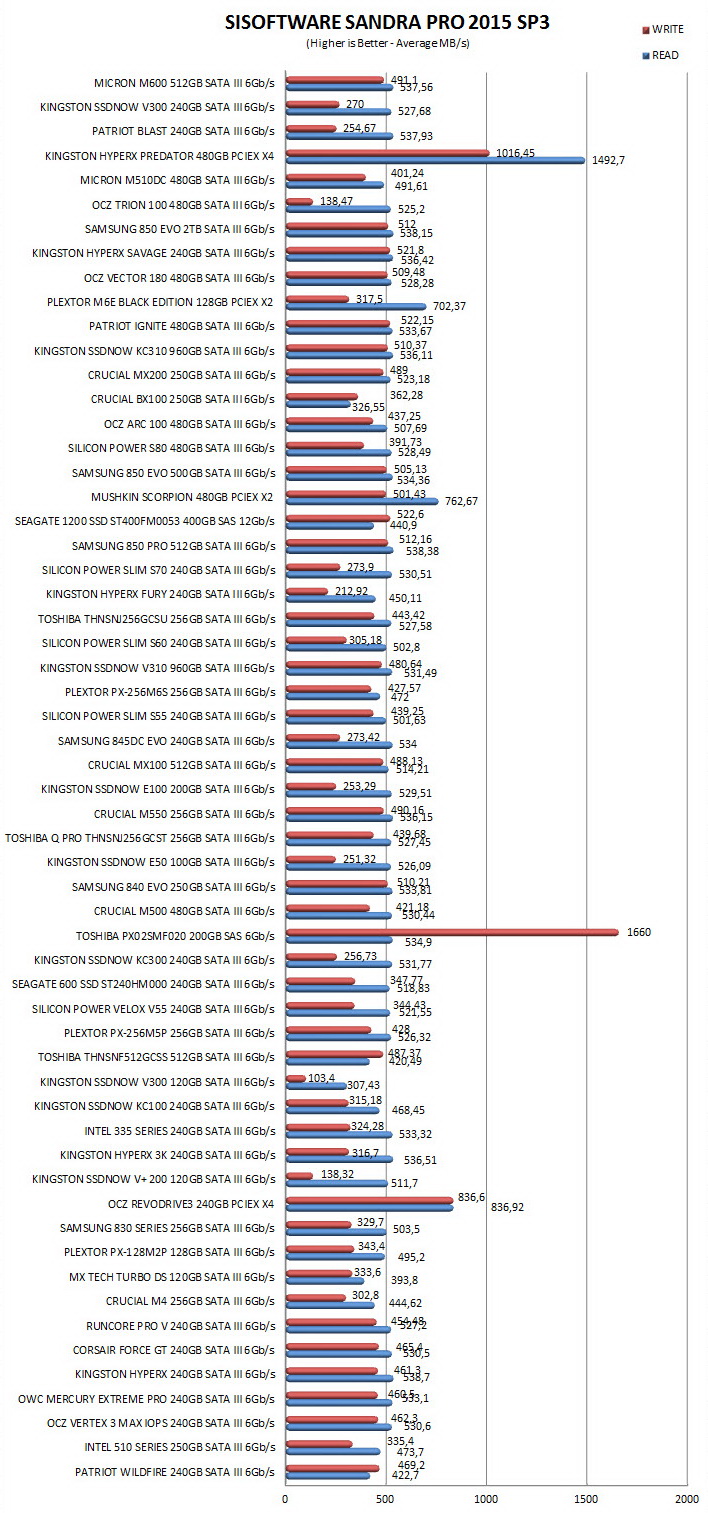

TEST RESULTS – AS SSD / IOMETER

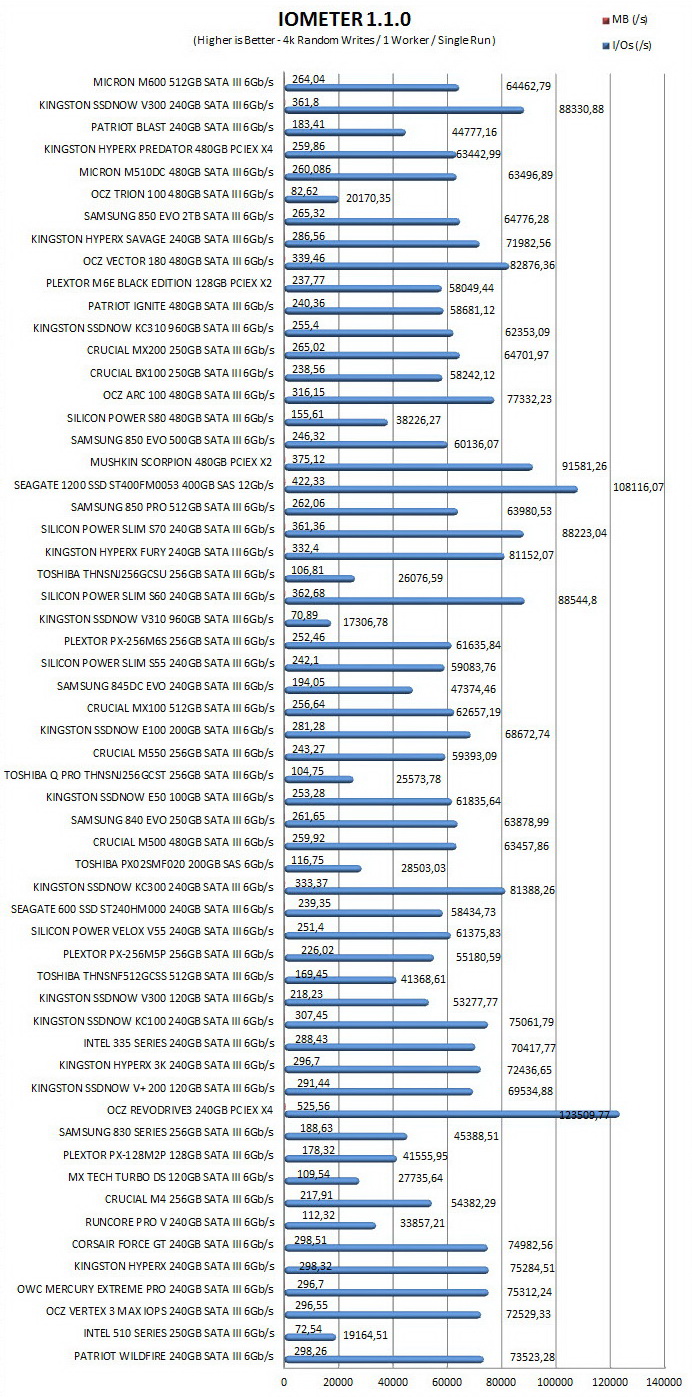
TEST RESULTS – IOMETER SNIA
TEST RESULTS – MOMENTUM CACHE ENABLED

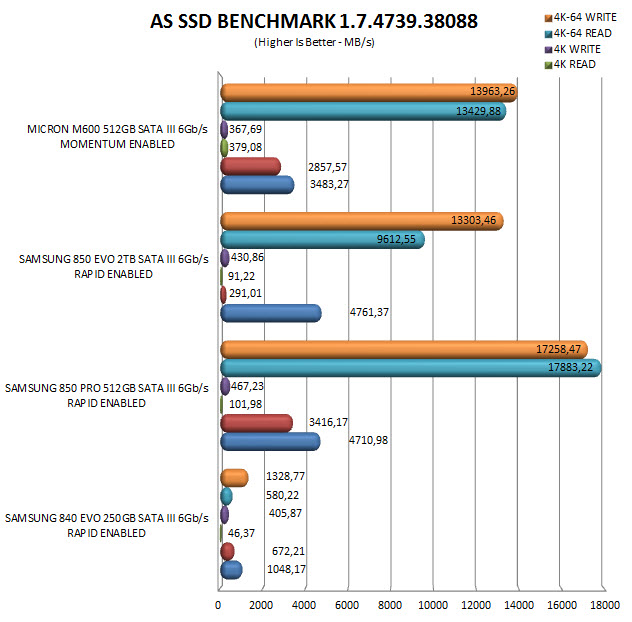

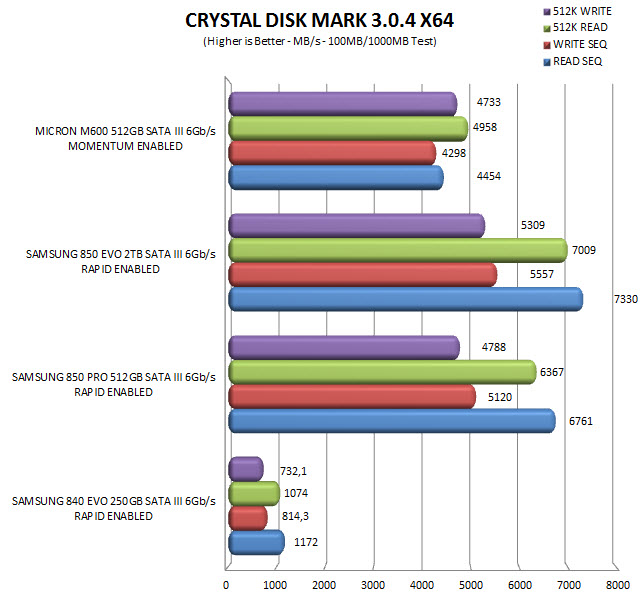

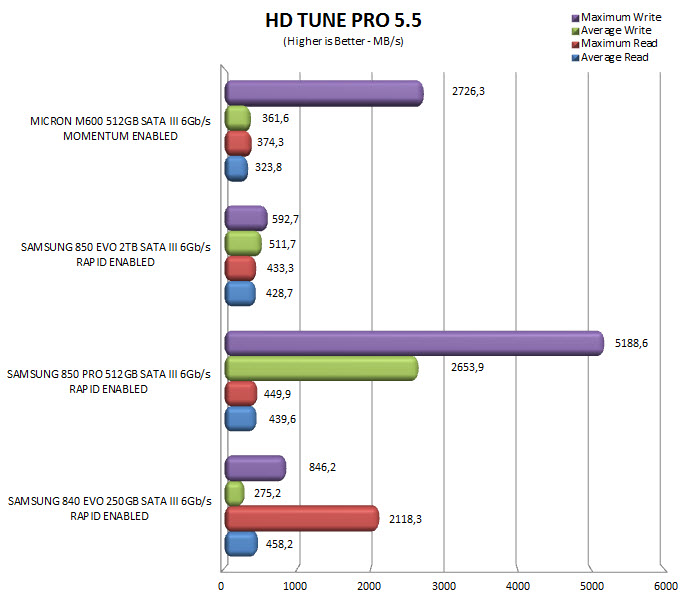
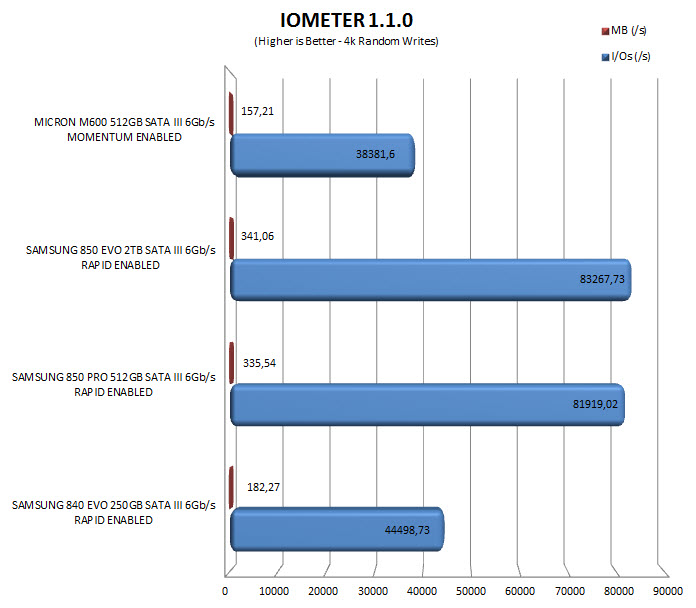
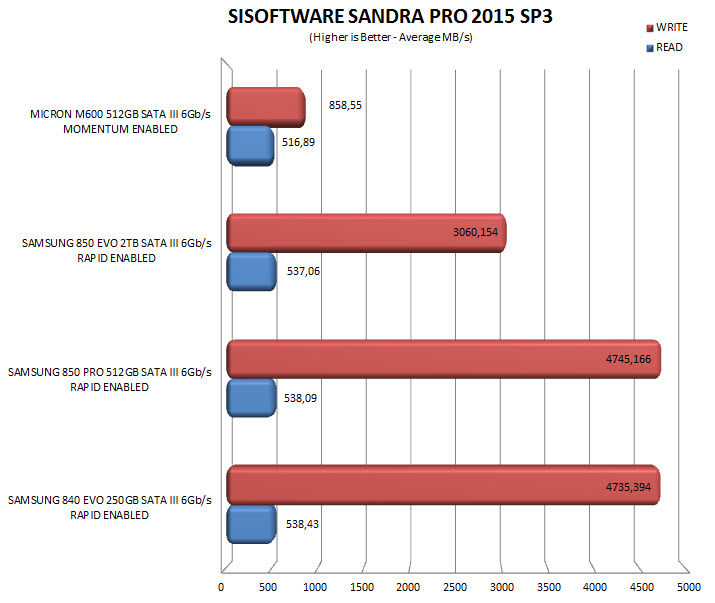
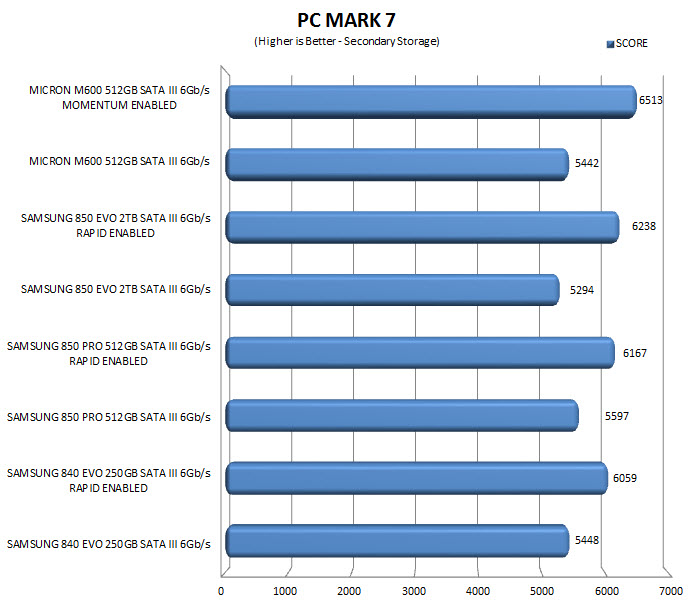
CONCLUSION
When the M600 arrived here the only thing I could think was the just how good (or bad) it would end up being against the more expensive M510DC. Of course back then I still hadn’t opened the enclosure so I thought that the difference in price had something to do with performance. In the end however this wasn’t the case since the M600 is better than the M510DC in pretty much every single test. Now the reason the M510DC is more expensive is its full power loss protection thanks to the much larger and more advanced tantalum capacitors something which the M600 lacks since it offers just basic (data-at-rest) power loss protection (not every SSD has that feature however so it’s a lot better than none at all). Also we may not have been able to test Microns dynamic write acceleration feature since it’s only available in the 128/256GB models but it does sound quite promising. Granted you shouldn’t expect much from a firmware tweak that basically makes MLC NAND flash modules behave like SLC ones but even the slightest boost in read/write performance is always welcome. As for the Momentum Cache feature well we’ve seen similar DRAM caching technologies in the past with RAPID being the most popular out there. You are getting a slight performance boost but due to the relatively small amount of DRAM systems have it can only come in handy with relatively “light” workloads (on the other hand if you have over 64GB of DRAM you may want to give it a shot).
If you liked our review of the M600 512GB SSD by Micron then you may be interested to know that you can currently get it for just USD208.90 inside the USA (Amazon.com) and for 249.49Euros inside the EU (Amazon.de). Once again we see that although pricing inside the USA is well balanced the same does not apply for the EU so I sincerely hope Micron can “tend” to that. In the end since the M600 512GB is following very closely the slightly more expensive 850 Pro 512GB SSD by Samsung we know for a fact that it’s a solid competitor at around the USD200 price range and for that it gets our Golden Award.
 PROS
PROS
- Build Quality
- Great Overall Performance
- Features (Momentum Cache/eDrive Support/Dynamic Write Acceleration)
- Storage Executive Software
- Partial Power Loss Protection
- Available In 1TB
CONS
- Current Price EU (For Some)

 O-Sense
O-Sense








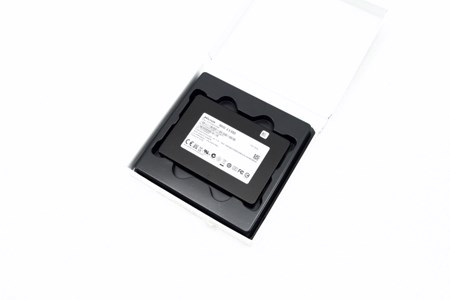
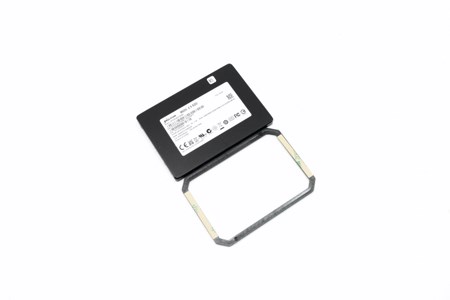
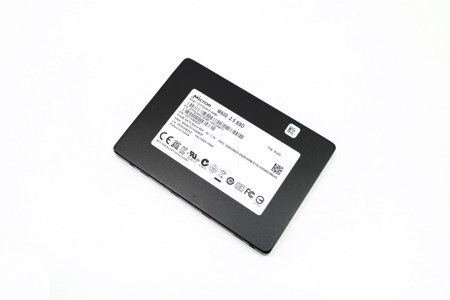

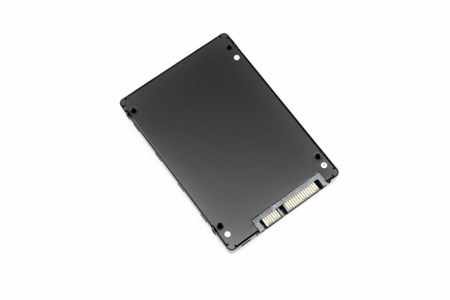
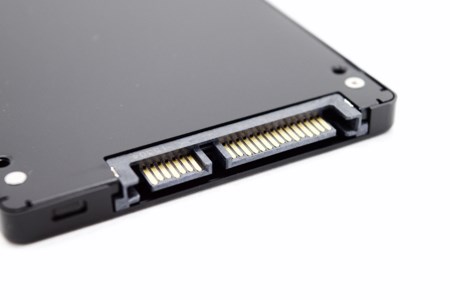
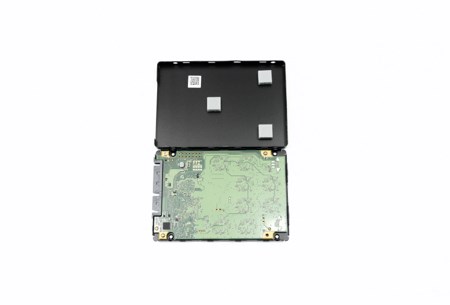

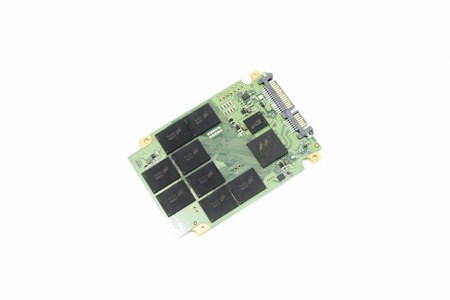

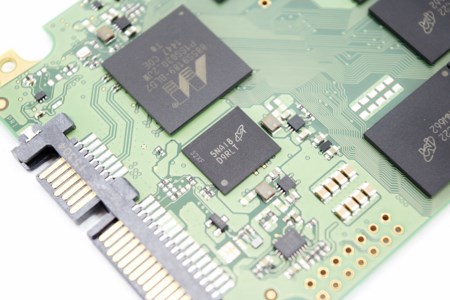
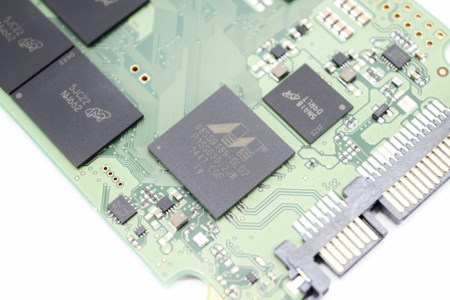
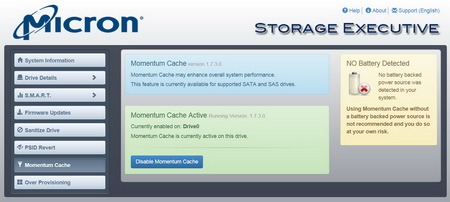

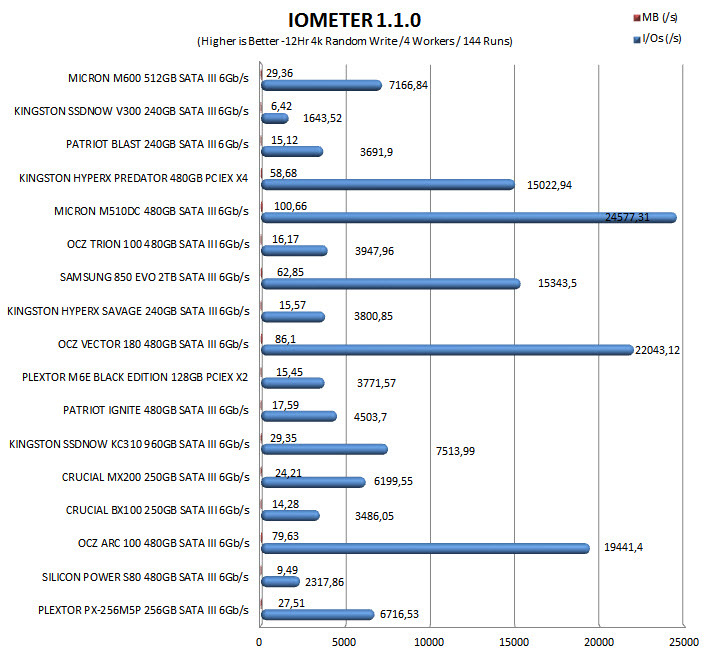
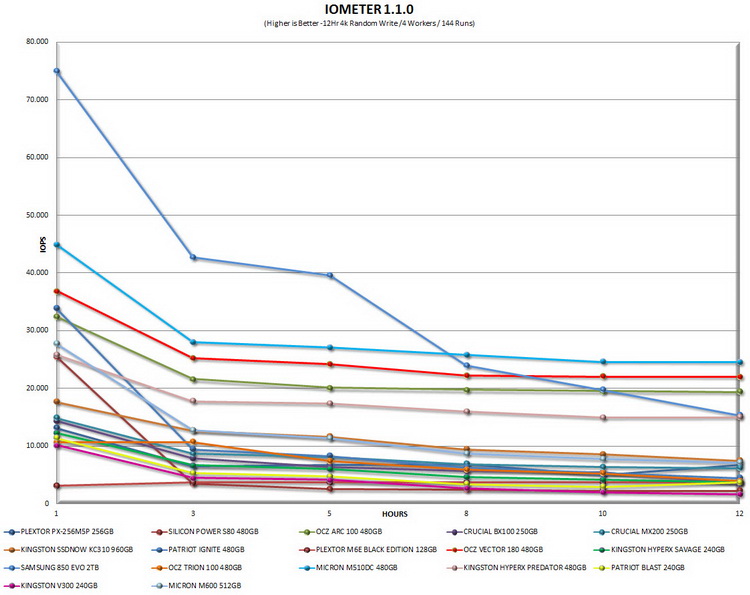
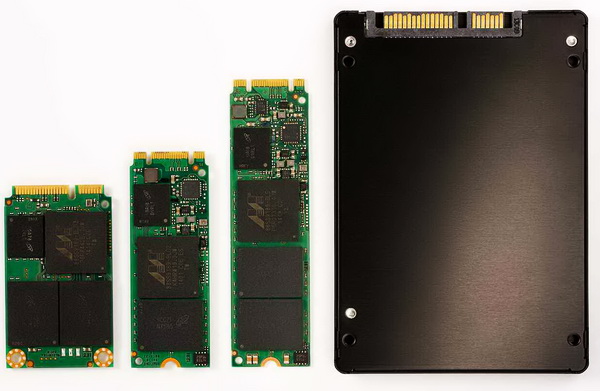


.png)

